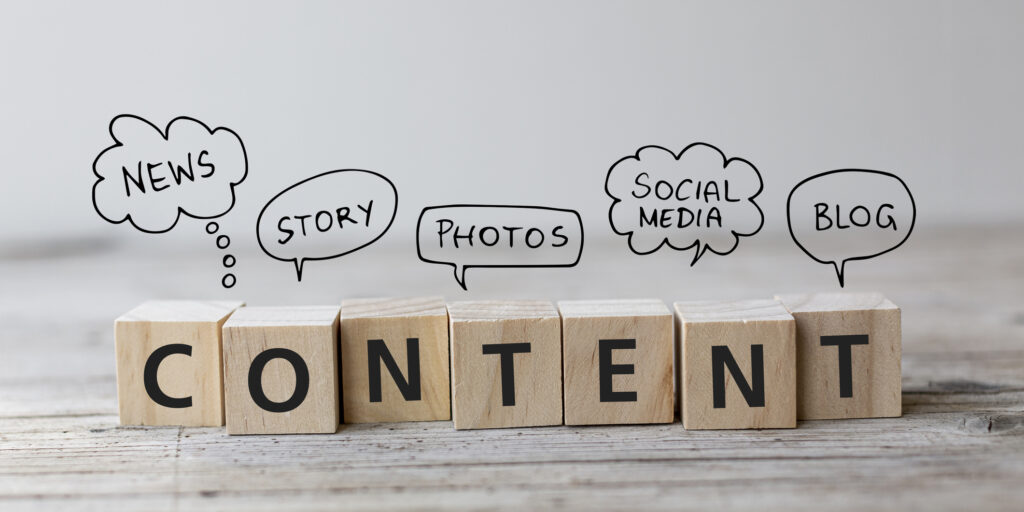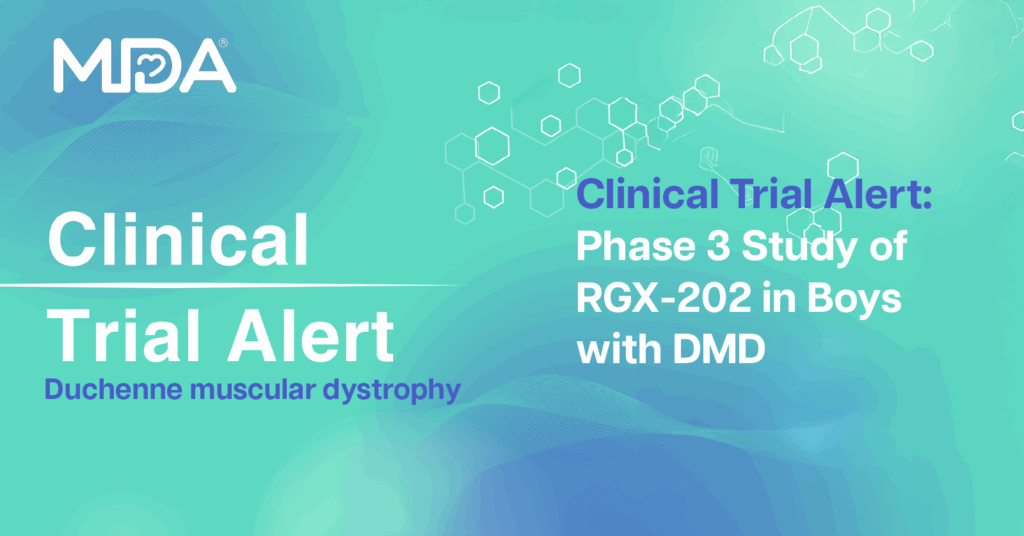![iStock-1421061585 [Converted] iStock-1421061585 [Converted]](https://mdaquest.org/wp-content/uploads/2023/05/GENE-Lead-iStock-1421061585-scaled-e1683902114458-1024x512.jpg)
Gene Therapy Options Grow With New Drug Approvals
By Larry Luxner | Thursday, May 18, 2023
5 Second Summary
Gene therapies are increasingly available for muscular dystrophies and other neuromuscular diseases. My Gene Therapy Journey is a Quest Media series that gives members of the neuromuscular community a platform to share their experiences with gene therapies — both approved therapies and those in clinical trials — and provides essential information to help individuals and families make decisions about gene therapies.
If current trends are any indication, 2023 may see the approval of more new gene therapies for more diseases than any year in history.
Consider this: In the past six years, the US Food and Drug Administration (FDA) gave its blessing to 12 such therapies — including five in 2022 — compared to zero not even a decade ago. Among this new class of treatments is Zolgensma, a $2.1 million one-time infusion approved in 2019 to treat spinal muscular atrophy (SMA).
That gene therapy has already proven nothing short of a miracle for Lennox Joy Schill of Brighton, Colorado, who was diagnosed with SMA type 1 a year after her state added SMA to its newborn screening program. At only 19 days old, Lennox received her Zolgensma infusion at Children’s Hospital Colorado. Her parents were able to choose between two disease-modifying therapies — Zolgensma and nusinersen (Spinraza) — for their infant, who was not yet showing any signs of SMA.

Two-year-old Lennox received a gene therapy treatment for SMA at 19 days old. Photo by Opal & Onyx
“While there were more possibilities of acute effects up-front with Zolgensma, we chose to go with that since it’s a once-in-a-lifetime thing, and Spinraza is every four months for the rest of her life,” says Lennox’s mother, Erin. “We thought that would be best for our child.”
Today, Lennox acts like any other 2-year-old. She runs, jumps, climbs, and does gymnastics.
New frontier of progress
The FDA approved the first gene therapy to treat a genetic disease in 2017. Called Luxturna, it was a game-changer for people with biallelic RPE65 mutation-associated retinal dystrophy, which causes vision loss. Since then, 11 more gene therapies have been approved, and each success has yielded knowledge that helps researchers develop new therapies for other diseases. Currently, about 2,000 gene and cell therapies are in clinical trials for diseases from cancer to sickle cell disease to neuromuscular diseases.
At his opening address to the clinicians, researchers, and pharmaceutical experts gathered for the 2023 MDA Clinical & Scientific Conference in March, Donald S. Wood, PhD, MDA’s President and CEO, called this a “dynamic time” for gene therapy.
“The frontier of progress in neuromuscular diseases has moved from the research labs more and more toward clinics,” Dr. Wood said. “However, we are in an era when it’s not enough to come up with a new idea. You need to take that idea and execute it in a way that can help patients.”
The same year that Luxturna was approved, researchers at the University of California-Berkeley used a gene editing tool called CRISPR-Cas9 to treat Duchenne muscular dystrophy (DMD) in mice with a single injection. This marked the first time any genetic disease had been successfully treated in an adult animal model using gene editing. While promising, translating advances in a lab to humans in a clinic can take a long time. Currently, there are no gene editing-based treatments on the market.
However, efforts continue. Earlier this year, German scientists announced they had used CRISPR-Cas9 to fix the genetic mutation that most commonly causes type 2A limb-girdle muscular dystrophy (LGMD) in muscle stem cells. The idea is that muscle stem cells could be extracted from an individual with LGMD, repaired, and transplanted back into the person. The researchers are testing the implantation of repaired cells in an animal model to see if it helps mice generate healthy muscle.
As of press time, the FDA is considering whether to approve delandistrogene moxeparvovec (SRP-9001), a gene therapy developed by Sarepta Therapeutics to treat DMD. If approved, SRP-9001 will become the world’s first gene therapy for DMD, as well as the most expensive drug in history, with a retail price likely exceeding $4 million. At the MDA Conference, Barry J. Byrne, MD, PhD, and John W. Day, MD, PhD, facilitated a critical discussion among MDA Care Center Directors about ensuring all clinicians and their teams are ready to support our DMD community through what will be a brand-new process of administering the therapy and conducting lab work and follow-up visits.
“I’m very excited about the prospect of gene therapy,” says Mindy Cameron, a patient advocate and government affairs consultant for Santhera Pharmaceuticals, as well as the mother of a son with DMD. “I’ve always been a big believer in the concepts behind gene therapy. Yes, we do have to overcome some issues, but I think that first approval’s going to open the gates, and we’re going to get better and better treatments.”
Big benefits and challenges
As with most treatments, gene therapy comes with potential benefits and risks.
Among the advantages: it has the potential to treat a broad spectrum of inherited diseases, only one dose may be required, and long-term disease benefits or even cures are possible.
“Gene therapy has the potential to be one-and-done, but we don’t know how long the benefit will last,” says Sharon Hesterlee, PhD, MDA’s Chief Research Officer.
The disadvantages of gene therapy include its complexity, high manufacturing costs, potential for irreversible side effects, and special expertise required for administration. A gene therapy is not a drug that you’ll be able to pick up at the local pharmacy.
Dr. Byrne directs the Powell Gene Therapy Center at the University of Florida. He’s been involved in research on gene therapies for several diseases, including DMD, Friedreich ataxia, and Pompe disease.
“When we started Luxturna studies, we thought there was a certain degree of vision loss that would never be recovered, but people who had lost their vision actually recovered it,” he says. He has seen similarly surprising results in ongoing DMD gene therapy trials being conducted by Sarepta, Pfizer, and Solid Biosciences.
“We’re seeing boys gain skills that they would otherwise have never developed,” he says. “Even with something as simple as running, you have to get both feet off the ground. Boys with Duchenne can’t do that, even before they decline. And now we see that many of the kids who’ve been treated with gene therapy can run.”
Access to gene therapies
Creating a gene therapy that works is only the first step. Once a new therapy goes through the long process of being developed and approved, the next challenge is to ensure that the people who need it have access to the drug — and to the professionals who must administer it. “Even at the best-run clinics, the number of patients with Duchenne they can treat with gene therapy will be about two a week — and that’s if there are no significant complications,” Dr. Wood said at the MDA Clinical & Scientific Conference.
Experts point out that, with approximately 30 million American living with rare diseases, the healthcare system isn’t ready to meet the needs of all the people who could benefit from genetic treatments. It’s not uncommon for people trying to get access to the currently approved gene therapies to run into barriers ranging from insurance approvals to hospital staffing.
The pharmaceutical industry will have to adapt, too, according to Peter Marks, MD, PhD, Director of the FDA’s Center for Biologics Evaluation and Research, who delivered a keynote address on “the promise of gene therapy” at the MDA Clinical & Scientific Conference.
“The pharma industry is used to ‘pay as you go’ — you get your prescription refilled every 30 days. But when you give someone a therapy once and they don’t need it again … then once you’ve taken care of the patients with that disease, now, on a yearly basis, your market will be smaller,” he said.
This is one of the factors that lead to higher costs for drugs that treat rare diseases, and drug cost is another significant barrier to access.
MDA’s research grants and programs aim to address some barriers at the source by reducing potential time delays and costs to motivate more companies to develop neuromuscular disease therapies. (Read more about this in How MDA Invests in Research Success .)
MDA also has launched its own gene therapy program, the Kickstart Program, focused on ultra-rare neuromuscular diseases.
In addition, public-private partnerships are emerging to help develop new drugs and enable access for small patient populations.
The Foundation for the National Institutes of Health (NIH), along with 35 public, private, and nonprofit partners, launched the Bespoke Gene Therapy Consortium (BGTC) in 2021. This venture involves the NIH’s National Center for Advancing Translational Science (NCATS) and is led by Philip J. Brooks, PhD, Acting Director of the NCATS Division of Rare Diseases Research Innovation.
Among other things, the consortium aims to make adeno-associated virus technology available for a broader range of diseases, streamline preclinical and product testing, and bring gene therapies to all individuals who need it sooner.
“The consortium is looking for better and more efficient ways to get gene therapy trials up and running, particularly for diseases that are of no commercial interest because they’re so rare,” Dr. Brooks says, noting that only 600 of the 7,000 known rare diseases have approved therapies. This means that at the current rate of development, it would take about 2,000 years to find treatments for all of them.
“This illustrates the point that we have to do something different if we want to treat, or even open, clinical trials for all these diseases,” Dr. Brooks says.
The world got a peek at many of the new ways of doing things — and the leading minds behind them — at this year’s MDA Clinical & Scientific Conference. It’s apparent that the wave of gene therapies is coming. And the rare disease community is ready for them.
Larry Luxner is a freelance journalist based in Israel. He writes frequently about rare diseases.
Words to Know
Here is a guide to some common gene therapy terms used in this article.
Adeno-associated virus (AAV): A harmless virus that can be engineered to deliver genetic material to target cells. AAV vectors are the leading platform for delivering gene therapies in the human body.
Animal model: A non-human animal used in research because it can mimic aspects of a biological process or disease found in humans. Typically, animal models are used to test the safety and efficacy of new therapies before human clinical trials are started.
CRISPR-Cas9: A tool used to “edit” pieces of a cell’s DNA. It uses a specially designed RNA molecule to guide an enzyme called Cas9 to a specific sequence of DNA. Cas9 then cuts the strands of DNA. The cut ends can be joined, or a new piece of DNA may be inserted in the gap.
Gene therapy: Modifying the content of a person’s genetic code or changing gene expression with the goal of treating or curing a disease. Approaches to gene therapy include gene replacement, gene silencing, and gene editing.
Genetic disease: A disorder caused by changes in one or more genes. These genetic mutations, or variants, can be inherited from parents or occur spontaneously.
Genetic mutation: A copy of a gene with a difference in its DNA sequence. Genetic mutations, or variants, can be pathogenic (disease-causing) or benign (not causing disease).
Next Steps and Useful Resources
- Read the Quest article These 7 Things Can Help You Understand Gene Targeting Therapy.
- Read the Quest Blog for breaking news on treatments and research.
- Use MDA’s Clinical Trials Finder to search for available neuromuscular disease clinical trials.
- Check out MDA’s Virtual Learning Programs, which include the webinar What Is Gene Therapy? in June 2023.
- Stay up-to-date on Quest content! Subscribe to Quest Magazine and Newsletter.
Disclaimer: No content on this site should ever be used as a substitute for direct medical advice from your doctor or other qualified clinician.




